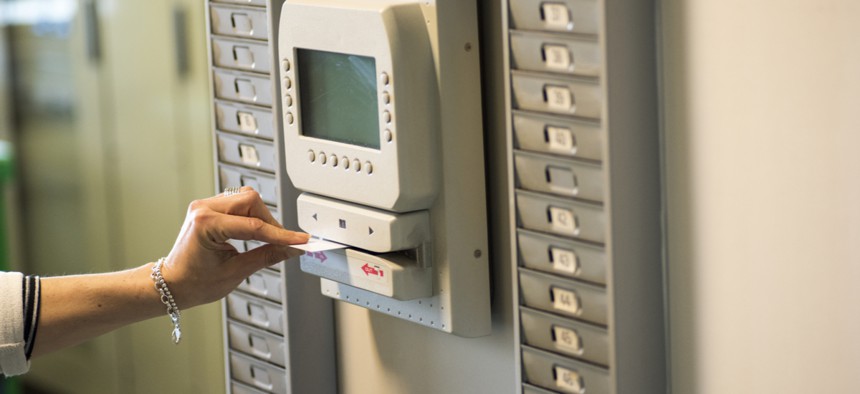Digital Time-Tracking Systems Are Draining Worker Pay

Antonio.li/Shutterstock.com
Making sure that people are compensated for the time they’ve worked is an issue of fairness.
The days of the soul-sucking manual punch clock are over. Digital systems now use things like facial recognition to monitor when a worker arrives and has finished for the day. Combined with certain legal ambiguities, the software that’s replaced the 19th century technology is helping some employers chisel away at workers’ hourly pay.
This so-called wage theft is a problem for many healthcare workers, drivers, and food-service and factory employees, according to a study by Elizabeth Tippett, associate professor at the University of Oregon School of Law, published in the American Business Law Journal. An earlier report from the Economic Policy Institute found that wage theft in the U.S. may account for more than $15 billion each year.
How digital wage theft works
Tippett’s study of 330 cases litigated in state and federal courts found three main types of digital wage theft:
- Rounding, which happens when the software is set to alter an employee’s starting and finishing times to pre-defined increments
- Automatic break deductions, which deduct preset time increments (for lunch or other breaks) from pay, regardless of whether the break was taken
- Time shaving, which takes place when managers alter time records to pare down the number of hours worked
One example Tippett cited is that of Jara Willis, a nurse in the intensive care unit of a Texas hospital. Willis was required to arrive seven minutes before the start of her shift and typically stayed as long as needed after the official shift ended. During four years of employment, she couldn’t remember getting through her 30-minute meal break without a work interruption. Willis wasn’t paid for the extra work during these periods and was compensated for work after her shift if it lasted more than seven minutes. Minute by minute, the hospital was able to accrue unpaid labor from Willis, according to Tippett’s research, potentially amounting to more than $7,400 annually.
Some employees do, of course, take advantage of their employers. Facial-recognition technology helps prevent “buddy punching,” which has nothing to do with hitting your friends—it refers to signing in a colleague who is late.
Workers can also use rounding features to their advantage. Tippett suggests this is unlikely to happen because employers have a financial incentive to discourage that behavior. The hospital where Willis worked had attendance policies to discipline workers for arriving even a minute late. And clocking out late after a shift, which would benefit the employee, was shamed as “mooching” by managers. Similarly, another company warns warehouse employees that clocking in more than seven minutes early produces a “flag” and that managers should treat these as “unauthorized early entries,” potentially punishable by termination, according to Tippett’s research.
What can be done about wage theft
Remedies for these issues are difficult: Tippett points out that such cases often rely on uncertain collective action litigation. And unless the legal framework is altered carefully, managers may just find another way to game the system in their own favor.
She suggests solutions such as amending the U.S. Fair Labor Standards Act to require that employees are paid for each hour they’ve worked, and to impose large penalties for time shaving. The Department of Labor also should consider prohibiting automatic break deductions, Tippett says.
Making sure that people are compensated for the time they’ve worked is an issue of fairness. And going beyond that, Tippett says, a bigger question may be “whether it is wise to extract uncompensated labor from those who care for our loved ones, and who process, transport, and serve the food we eat.”


